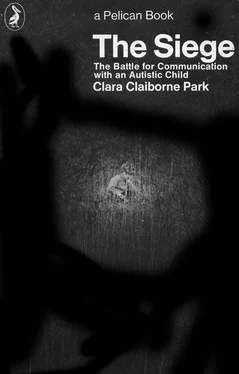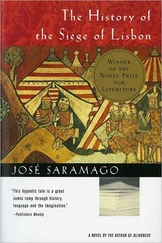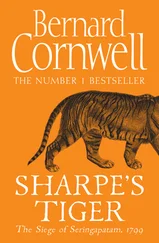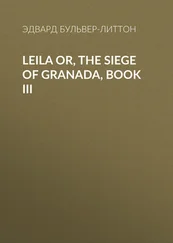Elly’s natural grasp of ordering principles seems to tell her what defines a system and consequently what is needed to make it complete. I had deferred teaching her zero; I knew it was a sophisticated mathematical concept, and what the Greeks had lacked, Elly, I thought, could do without. But Elly picked it up somewhere, at kindergarten perhaps, and brought it into common use. I had not forced numbers on Elly; she was seven and a half before I suggested that 1 + 1 = 2, 2 + 1= 3. She intuitively added larger sums for years, and I made sure to associate the abstract symbols with blocks or objects. She was now in kindergarten and it did not seem too much to teach. I was, however, unprepared for her critical reaction: ‘No zero!’ She wanted 0+1 = 1 and I supplied it. Then, ‘Oh, we forgot! Zero plus zero equals zero.’
Similarly, she could grasp the principles behind the verbal representation of numerical order. A few months after she was eight, at a time when she had been able to count correctly for years, we found her making numbers on a sheet. ‘One-ty nine, one-ty eight, one-ty seven. one-ty one, one-ty zero, zero-ty nine’… all the way down to zero-ty zero. What could be a clearer verbalization of the way our notational system works? If 29 is represented as ‘twenty-nine’, the word ‘two’ buried in the ‘twenty’ (as of course we had never even thought of teaching her), then ‘one-ty nine’ will be the equivalent of ‘nineteen’, and ‘zero-ty nine’ of ‘nine’, and when one gets at last to zero-ty zero there’s reason to shout out what had become Elly’s new cry of triumph, ‘Yo ho!yo ho! yo ho!’ [31] The reader will by now have noted how many of my transcriptions of what Elly says carry exclamation points, and wonder why. To appreciate the tone of Elly’s speech, it is important to realize that (requests aside) it consists largely of assertions, made with varying degrees of emphasis ranging from simple underlining through enthusiasm to transported delight. A musing or inconclusive tone is rare. Anxiety almost always leads to a questioning rise in intonation, and question marks or exclamation points could really be put after almost everything she says. A ‘no’, for example, that she is sure will be honoured is ‘No.’ One that she suspects I may not accept but which is still important to her will be edged ‘No?’
Yo ho indeed. For a year zero has been Elly’s favourite number. [32] I can imagine one famous theoretician-therapist explaining to me how an autistic child takes hold of a symbolic representation to express its inner emptiness and despair, saying as clearly as it can that the only way it has found to defend itself against its destructive environment has been to make itself a cipher. I supply this interpretation to show that I can do it as well as another. But it was an analyst who warned me against constructs.
She uses it interchangeably with ‘no’ in common speech (‘zero car in garage’), and she has even developed a purely verbal system in which ‘nobody’ and ‘somebody’ (an especially difficult concept for her because indefinite and inexact) become ‘zero-body’ and ‘one-body’, occasionally joined by ‘two-body’ and ‘three-body’, depending on the number of people in question. (Alternatively, the opposite of ‘nobody’ may be ‘yes-body’. ) Elly, in fact, focuses on hard-to-get ideas through systems as she once focused on them through colour. The shifts in such relative notions as dark and light are hard for her, and she has been slow to acquire comparatives and superlatives, but one of her favourite games now is to darken a room, and as she shuts its door the diminishing light from the hall illustrates ‘dark, darker, darkest!’
She is delighted when words exhibit ordering principles. The actual principles behind English word order, being so deeply situational in nature, she grasps (as I have noted in the preceding chapter) less well than a normal three-year-old, but it is quite otherwise with a principle that is not rooted in situations and usage, but arbitrary and devoid of content. We watched, incredulous, as Elly, just turned eight, extrapolated from what she had at long last learned: that the plural of ‘man’ is ‘men’. I had been able to convey it by a picture: the two words first, and below them, one man and several. The next day, Elly, totally absorbed, produced five pictures of her own. One was a reproduction of my man-men original. Next came MAMA-MEME, illustrated, of course, by one mama and several, followed by DADDY-DEDDY, SARA-SERE, and MATT-METT, each illustrated with a single figure and a group. (The single member of the family whose name did not contain the letter A was of course not pluralized. ) The utter divorce from common usage (Elly still does not form conventional plurals, though she knows how to, since S is for her the most difficult of the final consonants), the total disregard of human and situational plausibility are obvious; so too is the spontaneous abstraction and application of an ordering principle. One is no more extraordinary than the other.
Again and again we had felt it; something more than a simple lack of interest in things human — a positive commitment to, a genuine pleasure in that which is abstract, arbitrary, devoid of content. The passive two-year-old Elly saw the parquet formboard out of the corner of her eye and actually madethe effort to go upstairs so she could play with it. Elly four years later could go into an ecstasy that tensed every muscle in her body as she communicated the simple observation that some sleeves are short while others are long. Today she says to me, ‘Do rithmetic?’ and as I sit on her bed and transcribe the sums and answers she dictates, the springs shake as she jigs and bounces, smiles, chuckles, squeals, laughs aloud in the intensity of her pleasure. If an experience is empty of content, of a sort that the average child would find particularly uninteresting, Elly is almost sure to enjoy it. She has just discovered our zip code number — 01267. Of course she loves it.
Of all things in the varied world — cars and houses, animals, flowers, and people — why should Elly be interested in the conventions of notation? At five and a half, as I sat and drew for her, she asked for ‘pea’. Pea? I thought. Peach?Pear? We often drew the forms from her fruit-and-vegetable curtain, and she was so indistinct I could never be sure. I tried out all three. They weren’t right. Elly’s frustration mounted to the point where she made a supreme effort to communicate. ‘Lelluh?’ Lettuce? I wondered, and drew one without calming her in the least. And then I caught on: ‘ Letter !’ She laughed, bounced, that was it, she wanted the letter P. From then on I felt less need to defend myself against possible charges that I was pushing my child into activities that would satisfy my own intellectual pride. If I wanted to be proud of a child who — like the rest of her family — liked letters, I had one. Elly had had a set of plastic letters for years — twenty-six capitals and ten numerals. It was with that that, at five, she had spelled her name. When she was seven, in kindergarten and already able to recognize many words, I got her a rather elaborate set of wooden letters — a real compositor’s chest, full of e’s and a’s, enough to spell words in plenty. You could choose between capital letters and small, and I had bought the small, since she had the others. As Elly played with the letters I heard her say some curious syllables. ‘Uh-puh-cay?Uh-puh-cay?’‘Apple-cake?’ I said uncertainly. Though Elly had no special interest in apple-cake, it seemed a possibility; it was the sort of thing a child might say. Perhaps she had apple-cake at school. It was strange, at any rate, how she kept repeating these sounds. ‘Uh-puh-cay?’ Some urgency came into the voice. I looked again at the letters and suddenly I knew. ‘Uppercase?’ No uncertainty now: ‘ Up-uh-cay !’ I got the old set of capitals and began to make words, but Elly was not interested in them. Instead she occupied herself happily in producing the set of twenty-six upper- and lower-case pairs.
Читать дальше












